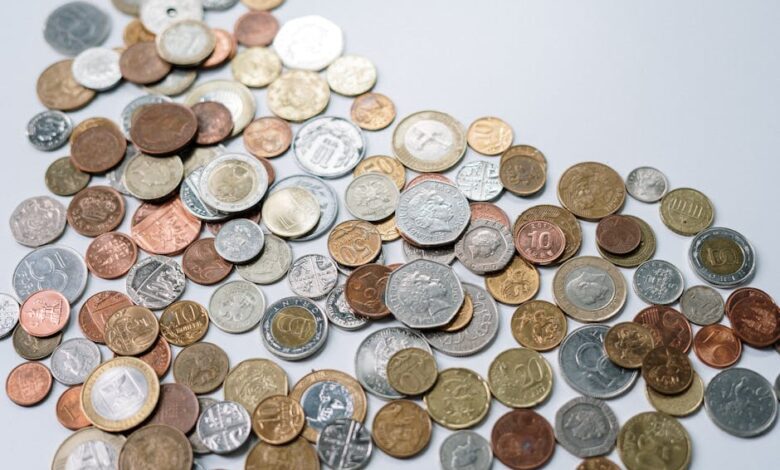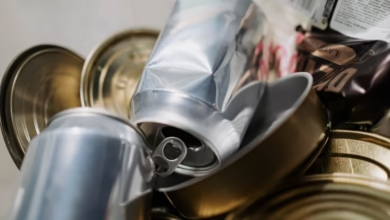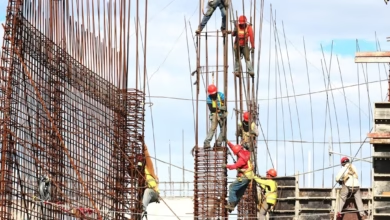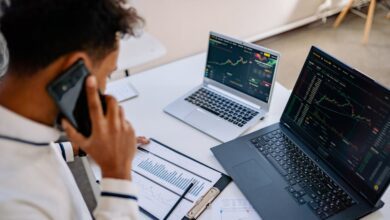Metals in Motion: Exploring Their Roles in Industry, Investment, and Economic Indicators

In an increasingly interconnected global economy, the dynamics of metal markets play a pivotal role in shaping both industrial growth and investment strategies. As technology advances and sustainability takes center stage, the demand for various metals—ranging from silver and copper to rare earth elements—has reached new heights. This article explores the multifaceted role of these metals, beginning with silver's unique position as both an industrial commodity and a coveted investment asset. We will delve into how copper prices serve as a barometer for economic health, the rising importance of rare earth metals in green energy technologies, and the ongoing debate between platinum and palladium as investment options. Additionally, we will examine the significance of metals in diversifying investment portfolios, the effects of inflation on metal prices, the future of aluminum in a sustainable economy, and how mining regulations influence market trends. By understanding these factors, investors and industry stakeholders can better navigate the complexities of the metal markets and make informed decisions in a rapidly evolving landscape.
- 1. **Navigating Market Dynamics: Silver's Dual Role in Industry and Investment**
- 2. **Copper as an Economic Barometer: Analyzing Price Fluctuations and Global Trends**
1. **Navigating Market Dynamics: Silver's Dual Role in Industry and Investment**
Silver serves a unique position in both the industrial and investment markets, acting as a bridge between tangible utility and financial asset. On one hand, it is a critical component in various industrial applications, including electronics, solar panels, and medical devices. The demand for silver in these sectors is driven by its excellent conductivity, antibacterial properties, and reflectivity, making it indispensable in the rapidly evolving technology landscape. For instance, the growth of renewable energy technologies has significantly bolstered silver's industrial demand, particularly in photovoltaic cells used in solar energy systems.
On the other hand, silver is widely regarded as a valuable investment vehicle. It is often seen as a safe haven during periods of economic uncertainty, akin to gold, but with a lower price point that makes it more accessible to a broader range of investors. Market dynamics, including inflation and currency fluctuations, can influence silver's appeal as a store of value. During times of economic downturns or elevated inflation, investors tend to flock to precious metals, driving up silver prices and enhancing its investment attractiveness.
The interplay between these two roles creates a complex market environment. For instance, a surge in industrial demand can lead to price increases that benefit investors, while simultaneously, any downturn in economic performance may shift investor focus away from industrial applications, impacting demand. Additionally, geopolitical factors and changes in mining regulations can further complicate this duality, as they affect both the supply chain and investor sentiment.
Ultimately, navigating the market dynamics of silver requires an understanding of both its industrial uses and its investment potential. Investors must remain vigilant to shifts in technology, economic indicators, and global trends that could impact silver's market standing, ensuring a well-rounded approach to leveraging this versatile metal in their portfolios.
Silver plays a dual role in both industrial applications and as an investment asset. In the industrial sector, silver is prized for its exceptional conductivity, corrosion resistance, and antibacterial properties, making it essential in electronics, solar panels, and medical devices. As global industries continue to evolve, the demand for silver in technology and renewable energy applications is expected to rise, particularly as solar energy becomes increasingly prominent. This industrial demand can influence silver prices, providing a complex interplay between its use in manufacturing and its perception as a safe-haven investment.
Copper prices serve as a barometer for global economic health, often reflecting trends in construction, manufacturing, and overall economic activity. When economies grow, the demand for copper typically increases due to its critical role in infrastructure development and electrical applications. Conversely, during economic downturns, copper prices may decline as demand weakens. Investors and analysts closely watch copper price trends, as they can indicate broader economic conditions and investor sentiment.
The shift towards green energy technologies has significantly impacted the demand for rare earth metals, which are crucial for producing batteries, electric vehicles, and wind turbines. As countries commit to reducing carbon emissions and transitioning to renewable energy sources, the need for these metals is expected to escalate. This increased demand can lead to price volatility and supply chain challenges, prompting investors to pay closer attention to the rare earth metals market.
When comparing platinum and palladium as investment options, several factors come into play. Platinum, traditionally used in jewelry and industrial applications, is experiencing fluctuating demand due to changes in automotive manufacturing and consumer preferences. Palladium, on the other hand, has surged in popularity due to its use in catalytic converters for gasoline engines, leading to supply constraints and rising prices. Investors must weigh the long-term viability of each metal in relation to market trends and technological advancements.
Metals are often seen as a means to diversify investment portfolios, offering a hedge against inflation and currency fluctuations. Precious metals like gold and silver are typically viewed as safe-haven assets during economic uncertainty, while industrial metals provide exposure to growth sectors. By incorporating a mix of metals, investors can potentially enhance returns while mitigating risks associated with market volatility.
Inflation can significantly impact the prices of both precious and industrial metals. As the cost of living rises, investors often turn to metals as a store of value, driving up demand and, consequently, prices. Additionally, increased production costs for mining and refining can lead to higher prices for industrial metals, influencing their overall market dynamics.
Looking ahead, aluminum is poised to play a vital role in a sustainable economy. Its lightweight properties and recyclability make it an attractive option for various applications, including transportation and packaging. The growing emphasis on sustainability and reducing carbon footprints may further boost demand for aluminum, positioning it as a key player in the transition to greener technologies.
Finally, mining regulations can have a profound impact on metal prices. Stricter environmental and labor regulations can increase production costs and limit supply, leading to price hikes. Conversely, relaxed regulations may boost supply but could raise concerns about environmental sustainability. Investors must stay informed about regulatory changes, as they can significantly influence market dynamics and investment decisions in the metals sector.
2. **Copper as an Economic Barometer: Analyzing Price Fluctuations and Global Trends**
Copper is often referred to as "Dr. Copper" in financial circles due to its ability to reflect the overall health of the global economy. As a fundamental industrial metal, copper is integral to various sectors, including construction, electrical wiring, and manufacturing. Price fluctuations in copper can serve as an economic barometer, indicating broader trends in demand and economic activity.
Historically, rising copper prices suggest increased industrial production and construction activity, while declining prices may signal economic slowdowns or reduced demand. For instance, during periods of robust global expansion, such as the early 2000s, copper prices surged due to heightened demand from emerging markets, particularly China. Conversely, during economic downturns like the 2008 financial crisis, copper prices plummeted as construction projects were halted and manufacturing slowed.
Recent trends have shown that copper prices are also influenced by geopolitical factors, trade policies, and supply chain disruptions. The COVID-19 pandemic highlighted vulnerabilities in global supply chains, leading to increased volatility in copper prices. Furthermore, the transition to renewable energy and electric vehicles is expected to drive copper demand, as these technologies require significant amounts of the metal for wiring and batteries.
Analysts closely monitor copper price movements to gauge economic sentiment and forecast future growth. As such, investors often consider copper prices not only in isolation but in conjunction with other economic indicators, such as GDP growth rates and industrial production statistics. Understanding these dynamics can provide valuable insights into future economic conditions and investment opportunities.
In conclusion, the intricate landscape of metal markets reveals a multifaceted interplay between industrial applications and investment opportunities. Silver's dual role exemplifies how economic trends can shape demand across sectors, while copper serves as a vital indicator of global economic health, reflecting broader market conditions. As the push for green energy technologies intensifies, the demand for rare earth metals is poised to rise, underscoring the importance of these materials in the transition toward sustainable practices.
The ongoing debate between platinum and palladium as investment choices highlights the necessity for investors to carefully consider market conditions and future trends. Additionally, diversifying investment portfolios with metals can provide a hedge against inflation, which consistently influences the pricing dynamics of both precious and industrial metals. Looking ahead, aluminum's role in a sustainable economy will be crucial, particularly as industries seek to minimize their environmental footprint.
Finally, the impact of mining regulations cannot be overlooked, as they play a significant role in shaping metal prices and market access. As we navigate these complexities, understanding the underlying factors that influence metal markets will be essential for investors and industry stakeholders alike. Embracing this knowledge will not only facilitate informed decision-making but also promote a more sustainable and resilient economic future.





